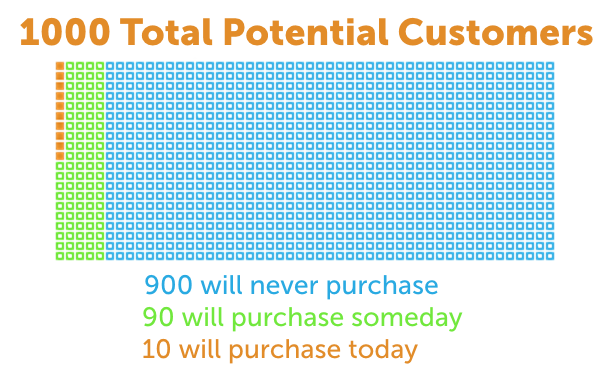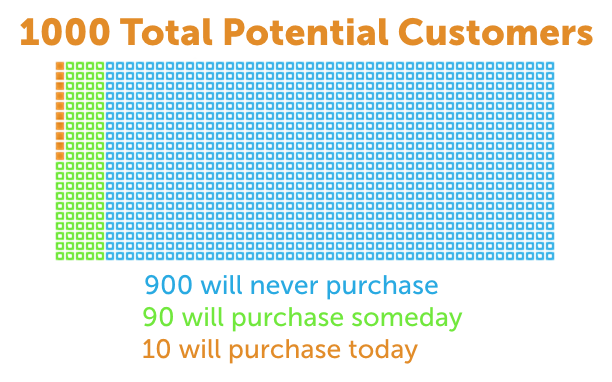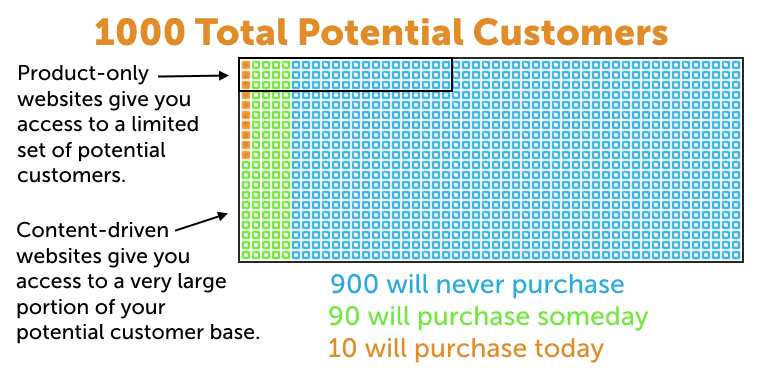
I was watching an episode of Shark Tank this past week featuring young entrepreneurs. One of the entrepreneurs was Carter Kostler, the 15-year old owner and creator of Define Bottle, a fruit-infused water bottle.
You can watch his portion of the episode here:
About 2 minutes into the broadcast episode you’ll see the sharks ask Carter about his revenue – $65k in about 6 months, 50% of which came from online sales. He sells each bottle for $30 at a cost per bottle of $10, so not a bad margin overall.
The reason I’m writing this post is for Mark Cuban’s line of questions that starts around 3:34 in the original video (unfortunately the 2-min video clip above doesn't have this clip anymore):
- Mark Cuban: “What about online? Where is your online traffic coming from?”
- Carter: “Well, early on I created fruit infused water recipe websites. My goal was to promote the Define Bottle on those websites.”
- Mark: “OK, what kind of traffic are you getting, what kind of conversion are you getting, and what do you know about your customers?”
- Carter: “We currently get 2000 hits a day on those websites, and I think our conversion rate is about 0.5%.”
- Mark: “Why do you think your conversion rate is so low?”
- Carter: “I don’t know…”
Here’s the deal – Mark’s obviously a smart businessman. But, the point he’s missing is a pretty common one we see from executives who are familiar with conversion-driven online channels like paid search.
Good Content Marketing Will Drag Down Your Conversion Rate
Let’s say there are 1000 people in the world who are interested in your product, and 100 of them are actually willing to buy it, and 10 want to buy it right now. To simplify the example further, let’s pretend that organic search is the only traffic channel we’re looking at.

A traditional e-commerce website with product pages, category pages, and maybe 1-2 information pages might reach 10% of that audience – the 10% searching for “fruit-infused water bottles”. That group of traffic is likely to consist of decent converting traffic – consumers ready to buy.
A traditional e-commerce website with an extensive content library, however, unlocks access to a much greater portion of the marketplace:

Looking at conversion rate alone is the problem here, and it’s the main thing that stakeholders need to understand about how conversion works on websites with extensive content and educational resources. In the example above the product-driven website gets an XX% conversion rate, while the content-driven website gets a YY% conversion rate.
It’s obvious when looking at the graphics above that comparing conversion percentages out of context is misguided.The content-driven website clearly gets better total sales. Yeah, they’re drawing in a ton of traffic that won’t convert, but who cares if sales are up?
Focus On Actual Growth & Multi-Touch Attribution, Not Arbitrary Conversion Benchmarks
When selling content marketing as a concept to a conversion-focused stakeholder, you have to set expectations that conversion rates will go down due to an increase in non-converting traffic.
Measuring subconversions like email subscribers and content downloads is a good step towards demonstrating non-revenue benefits of content marketing, but the best answer is to place your attention on multi-touch attribution and total sales increases – not percentages.
Carter, great job creating content assets that drive sales for your business and attract likely customers. You’re on the right path to getting your product in front of your entire audience – not just a small set of users ready to purchase.
✉️ Get an email when we publish new content:
Don't worry, we won't bug you with junk. Just great content marketing resources.
Ready To Try
Content Harmony?
Get your first 10 briefs for just $10
No trial limits or auto renewals. Just upgrade when you're ready.

You Might Also Like:
- The Wile E. Coyote Approach To Content Guidelines
- Content Brief Templates: 20 Free Downloads & Examples
- The Keyword Difficulty Myth
- How To Find Bottom of Funnel (BoFU) Keywords That Convert
- Bottom of Funnel Content: What Is BOFU Content & 10 Great Examples
- 20 Content Refresh Case Studies & Examples: How Updating Content Can Lead to a Tidal Wave of Traffic 🌊
- How to Create Editorial Guidelines [With 9+ Examples]
- Content Marketing Roles
- How To Write SEO-Focused Content Briefs
- The Content Optimization Framework: [Intent > Topic > UX]
- How To Update & Refresh Old Website Content (And Why)
- 12 Content Marketing KPIs Worth Tracking (And 3 That Aren't)
- 16 Best Content Writing Tools in 2024 (Free & Paid)
- How to Create a Content Marketing Strategy [+ Free Template]
- How To Create Content Marketing Proposals That Land The Best Clients
- What Is A Content Brief (And Why Is It Important)?
- How To Create A Dynamite Editorial Calendar [+ Free Spreadsheet Template]
- How to Use Content Marketing to Improve Customer Retention
- Types of Content Hubs: 5 Approaches & 30+ Examples
- How To Do A Content Marketing Quick Wins Analysis